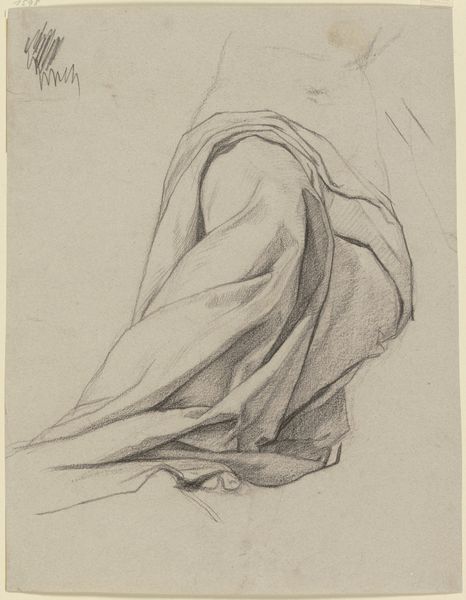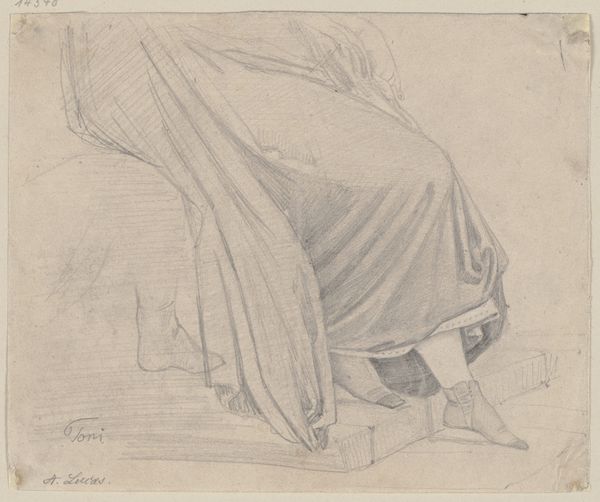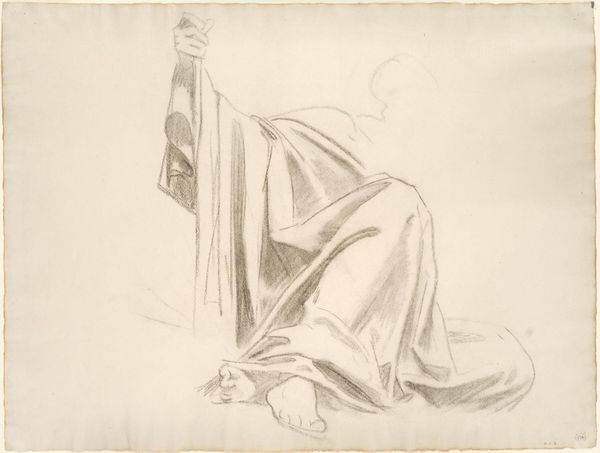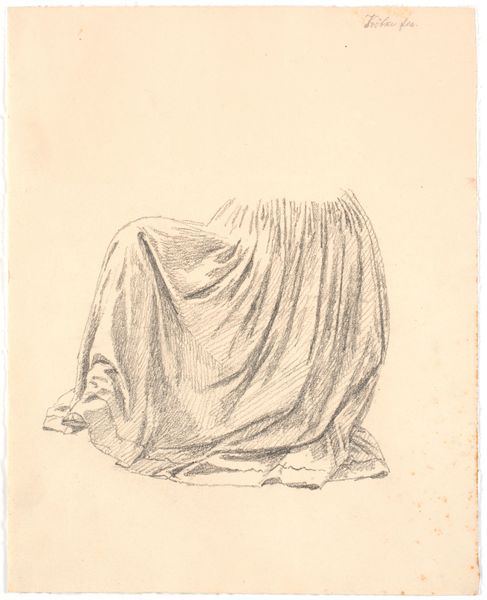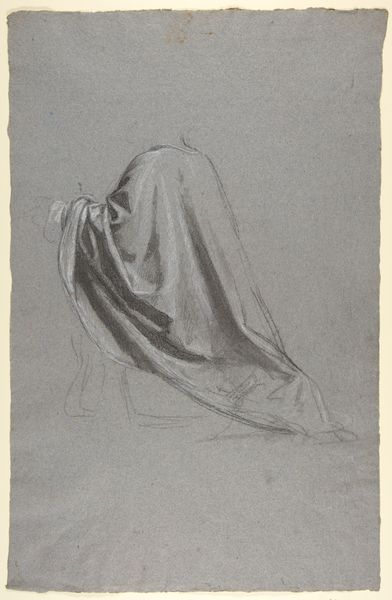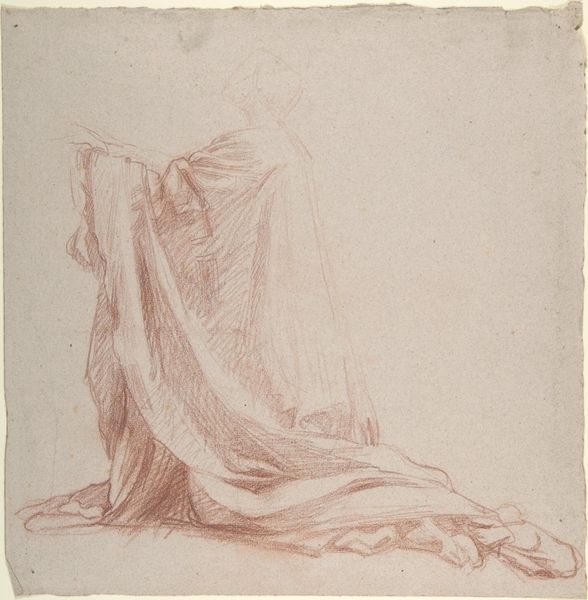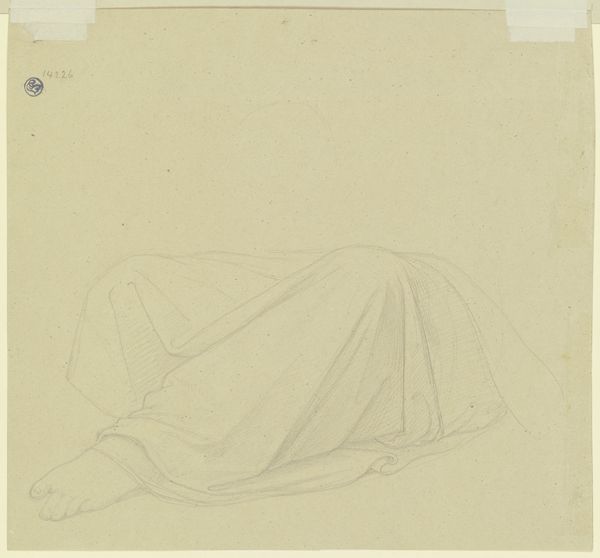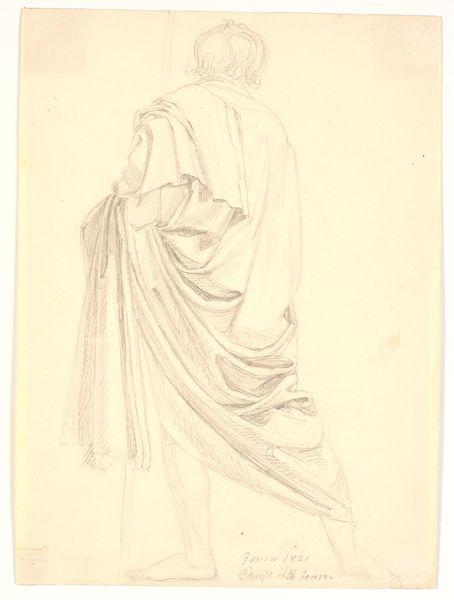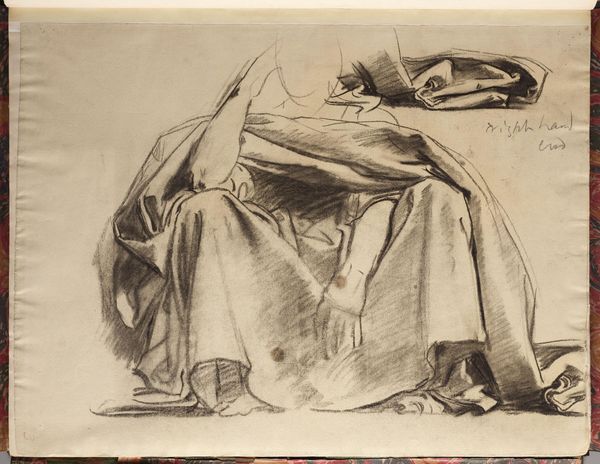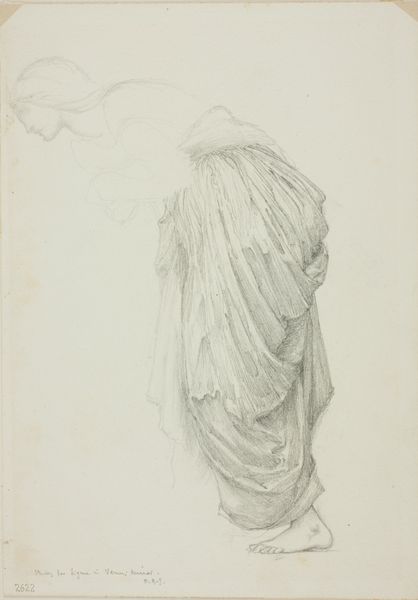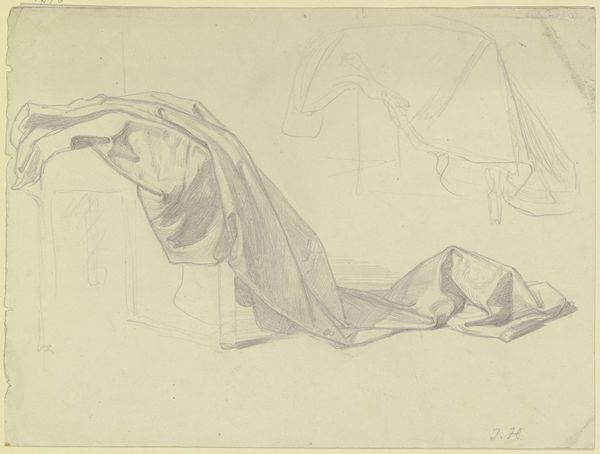
Copyright: Public Domain
Curator: Looking at Josef Ferdinand Becker’s “Kneeling Garbed Figure” from around 1873, now residing here at the Städel Museum, I’m struck by how a seemingly simple study in pencil, chalk and gouache on paper can convey so much about artistic process and academic tradition. Editor: My first impression? Eerie, almost. It looks like a ghost caught mid-prayer, or a forgotten sculpture wrapped in its burial shroud. The drape work is astonishing, but it also obscures, transforming the human into something…other. Curator: Precisely. The meticulous rendering of drapery was a cornerstone of academic training. Artists were expected to master the play of light and shadow on fabric, understanding how it reveals form while simultaneously concealing it. Think of the textile industry booming in Europe at the time and how material wealth equated with status and you will be better able to connect with the cultural impact textiles would have had on beholders viewing the piece in the late 19th Century. Editor: But why choose to focus solely on drapery? Why not reveal the figure beneath? It feels like Becker is making a statement about the power of suggestion, about the art of what’s left unsaid. Or maybe he just really loved rendering fabric. Curator: Well, I suspect the process held a deeper meaning. Drapery studies allowed artists to practice rendering complex forms and textures without the emotional weight of portraiture or the narrative demands of history painting. We might even view them as an early precursor to abstraction. Becker is not depicting a specific individual; he's investigating the qualities of form, the effects of light, and the potential for emotional resonance within simple cloth. Consider the way a cloth itself is manufactured—what does mass production allow us to express artistically and culturally? Editor: Interesting. It almost sounds as if the artistic rendering itself becomes the subject. I wonder what Becker would think of our debate now—would he be surprised that his academic study sparked such imaginative reflection over a century later? Curator: Undoubtedly! But such is the enduring power of art—to transcend its original context and continue to provoke thought and feeling across time. By appreciating not only the finished work but also the labor and historical environment involved, we can discover layers of significance that would have been hidden otherwise. Editor: And who knows, maybe that "ghostly" presence I felt earlier wasn't so far off the mark after all! The drawing gives an uncanny feeling to those who engage with it. Thanks to a closer examination, the ghost may be not of Becker's art but a mirror for viewers across eras!
Comments
No comments
Be the first to comment and join the conversation on the ultimate creative platform.
